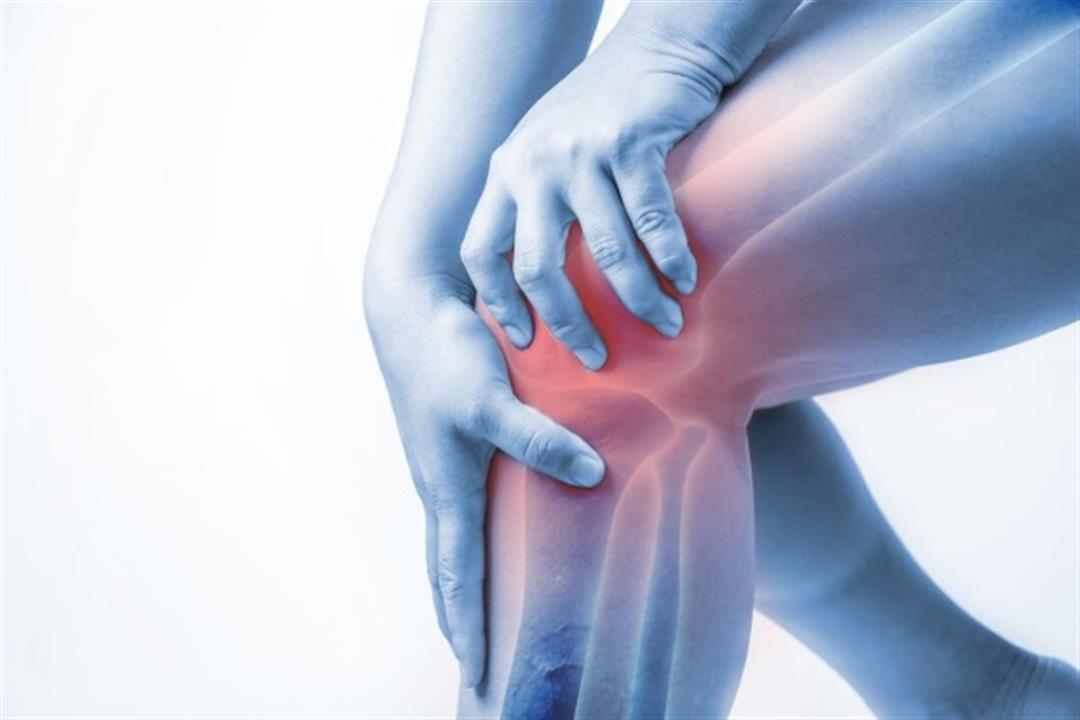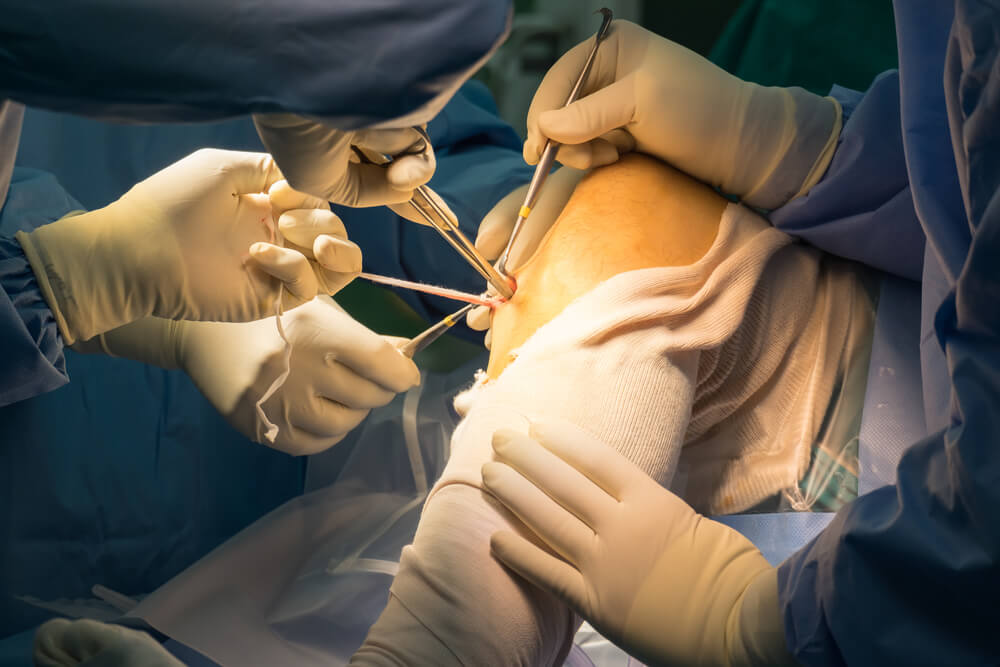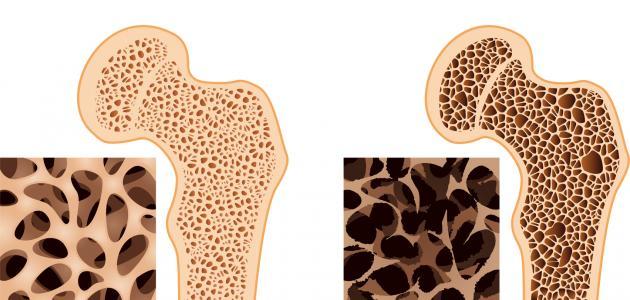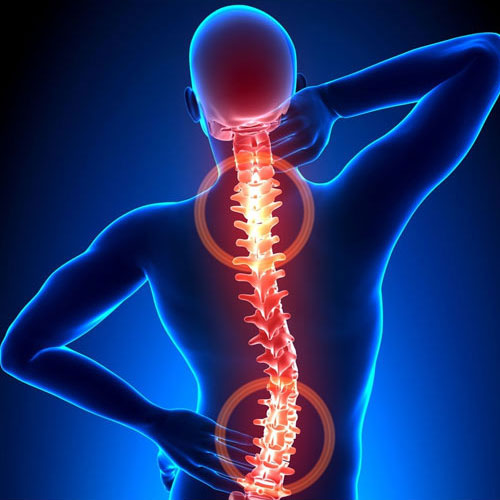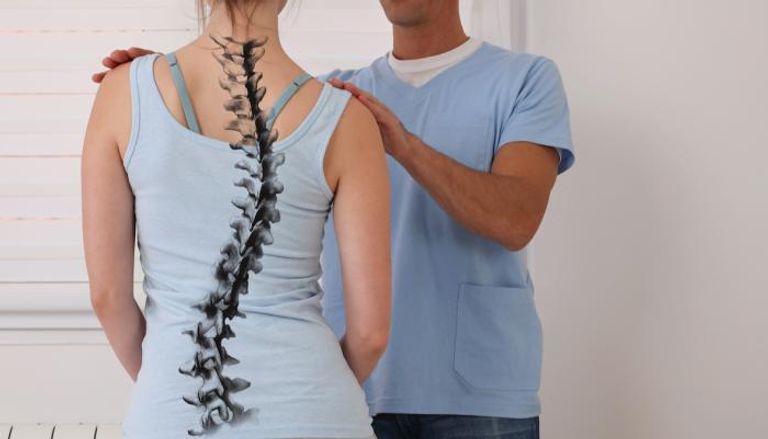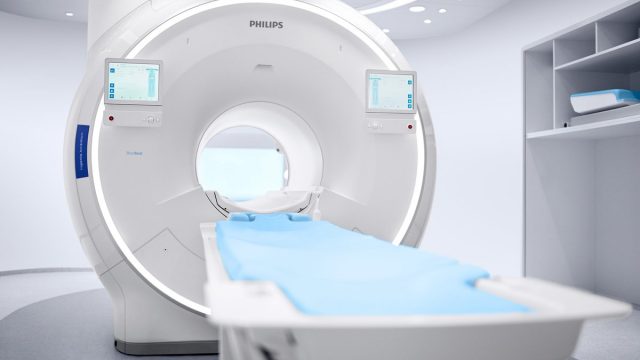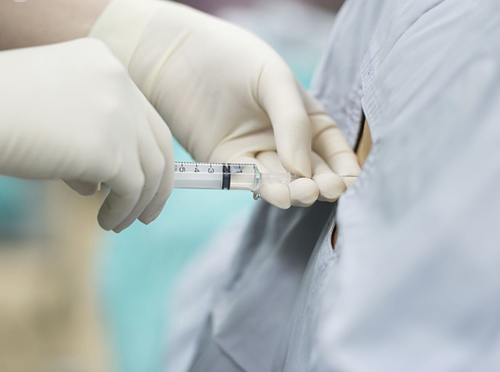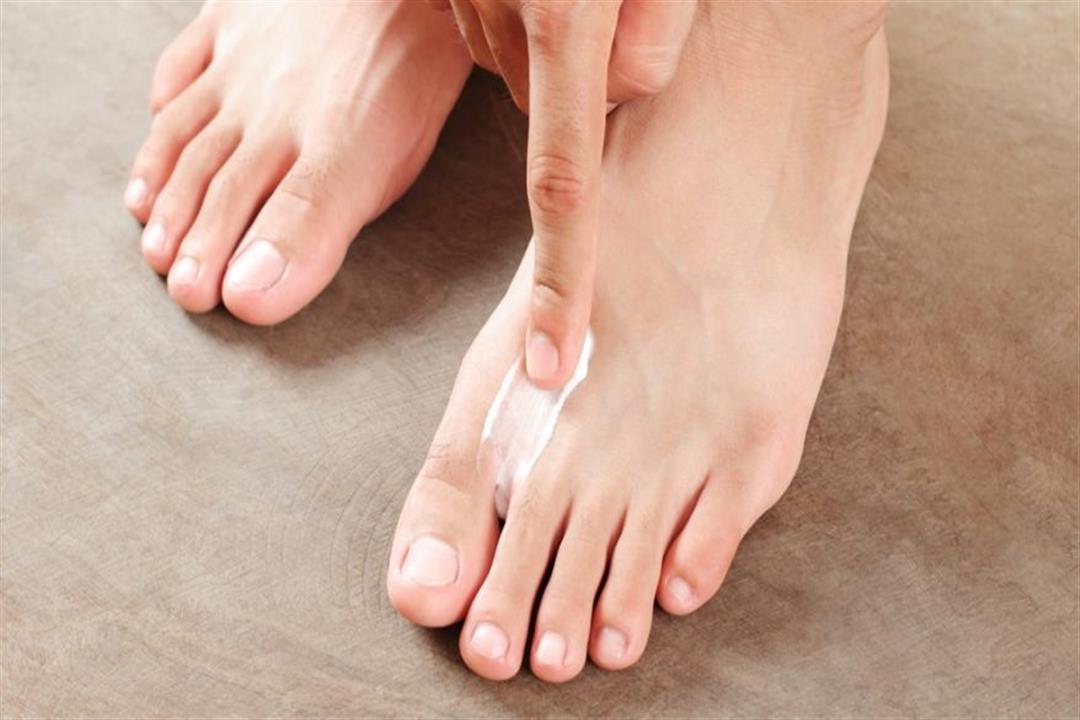Learn more about shoulder surgeries and what are the complications after a shoulder stabilization surgery?
Shoulder Surgeries
Shoulder Surgeries: Everything You Need to Know About Dr. Amr Amal’s Services
Shoulder surgeries are delicate surgical procedures that require choosing an experienced surgeon specialized in this field. Fortunately, Dr. Amr Amal, a consultant of orthopedic and joint surgery at Ain Shams University, is one of the best specialists in this field in Egypt. In this article, we will provide you with a list of some of the shoulder surgeries performed by Dr. Amr Amal.
- Shoulder Plates and Screws Fixation Surgery: The surgery for the placement of plates and screws in the shoulder is one of the most common procedures performed by Dr. Amr Amal. This procedure is offered to patients suffering from shoulder bone fractures or external acromion fractures. The surgeon uses advanced techniques to ensure that patients receive the highest level of healthcare, pain relief, and natural restoration of shoulder functions.
- Shoulder Muscle Balancing Surgery: Muscle balance in the shoulder plays a crucial role in maintaining its stability and proper movement. When there is an imbalance, the patient may require surgery to restore muscular balance. With Dr. Amr Amal’s experience in shoulder surgeries, excellent results in re-establishing muscle balance in the shoulder and improving the patient’s condition are achieved.
- Shoulder Joint Replacement Surgery: When the shoulder is damaged to a degree that cannot be overcome by traditional treatment, shoulder joint replacement surgery may be the best option. Dr. Amr Amal is an expert in this type of surgery, performing it using modern techniques and high quality, which helps improve the patient’s range of motion and relieve pain.
Determining the exact cost of the surgery can be difficult due to the variation in patients’ cases and depending on the individual medical condition. However, Dr. Amr Amal ensures that the prices are appropriate for patients, with the cost of surgeries ranging between 50,000 and 100,000 Egyptian pounds.
While this information is derived from data available online, it is essential to consult your doctor before undergoing any surgical procedure to assess your individual case and make the best decision. It is always encouraged to conduct additional research and directly communicate with trusted medical references before making any significant health decisions.
How Long Does Shoulder Surgery Take?
Shoulder surgery is a procedure that some may require to treat painful shoulder issues that hinder an individual’s movement and impact their daily quality of life. In this list, we will shed light on the duration of shoulder surgery and what it may entail.
Average Duration of Shoulder Surgery:
- It is generally expected for arthroscopic shoulder surgery to take from one to two hours to complete all steps of the procedure.
- However, more complex surgeries involving intricate tendon injuries may take a longer period.
More Details About the Procedure:
- Shoulder tendon repair surgery requires specialized expertise and high skill in treating shoulder problems.
- The operation is usually performed using an arthroscope, which contributes to a shorter duration of the surgery.
Dr. Amr Amal:
- Dr. Amr Amal offers his services in Egypt at the Dar Al Fouad Medical Center.
- Dr. Amr Amal specializes in performing shoulder tendon repair surgery with distinctive and effective methods.
- Dr. Amr Amal is distinguished by his excellent reputation and high expertise in the field of treating shoulder problems.
Cost of Shoulder Surgery:
- The price of the operation is influenced by several factors such as the patient’s condition, the chosen method of treatment, anesthesia costs, and the tools used in the surgical procedure.
Recovery After Surgery:
- It is likely that the shoulder will be immobilized using a sling during the recovery period to accelerate the healing of wounds and tendons.
- Commitment to physical therapy and rehabilitation sessions is essential for gradually restoring strength and flexibility to the shoulder after the operation.
Number of Necessary Sessions:
- Patients typically need 6 to 24 sessions of physical therapy after shoulder tendon repair surgery.
- The physiotherapist determines the number of sessions based on the patient’s condition and the estimated need for a successful recovery.
Dr. Amr Amal and the surgery itself are a source of optimism and hope for those suffering from painful and complex shoulder problems. Before undergoing any surgical procedure, patients should consult their doctor for an accurate diagnosis and an appropriate treatment plan.
How is shoulder surgery performed?
Shoulder surgery is a surgical procedure aimed at restoring and renewing the function of the injured shoulder joint. In this procedure, the surgeon removes damaged tissue and reconstructs and secures the tendons, in addition to treating any other problems that may affect the health of the joint.
Here is an overview of how shoulder surgery is performed:
- Anesthesia: The procedure is performed under general anesthesia to ensure the patient does not feel pain during surgery.
- Making Surgical Incisions: The surgeon creates several small surgical incisions over the shoulder joint. These incisions are used as entry points for inserting the arthroscope and other surgical instruments.
- Evaluation and Inspection: After inserting the arthroscope, the surgeon evaluates the condition of the shoulder joint and determines the necessary procedures. This may include repairing torn tendons, removing damaged tissues, and prominent bone protrusions.
- Fixation and Reconstruction: The surgeon secures and reconstructs the torn tendons using special surgical tools. Small stitches and screws are used to secure the tendons in their correct place.
- Closure and Recovery: After completing the surgical procedure, the surgical incisions are properly closed, and the patient is monitored for a short period before being allowed to return home.
Overcoming obstacles and getting ready for a stress-free life:
Shoulder surgery requires proper follow-up and rehabilitation to help restore joint function and muscle strength. After surgery, the patient is advised to perform exercises that help rehabilitate the joint and strengthen the surrounding muscles.
Among the exercises recommended after shoulder surgery are:
- Motion Exercises: The patient should gently move the affected arm and massage the joint to improve its flexibility and move it in all directions.
- Endurance Exercises: It is recommended to perform moderate exercises to strengthen the shoulder, arm, and back muscles. This includes lifting light weights and plank exercises.
- Balance Exercises: Good body balance can better strengthen and stabilize the shoulder joint. These exercises include standing on one leg and other balance exercises.
Cost of Shoulder Surgery in Egypt:
The cost of shoulder surgery in Egypt varies based on several factors such as the medical institution, the surgeon’s specialization, and the patient’s condition. It is best to consult with a specialist doctor to get an accurate estimate of the cost.
Success Rate of Shoulder Surgery in Egypt:
Egypt is one of the leading countries in performing arthroscopic shoulder surgeries, with a high success rate. However, it should be noted that the success rate is affected by many factors related to the patient and the characteristics of their health condition.
Patients should consult with a surgical specialist and follow the necessary guidelines to ensure the successful recovery of shoulder joint health after surgery.
How long does the shoulder tendon cutting procedure take?
The shoulder tendon cutting procedure usually takes from one to two hours. The duration may be longer in cases of complex tendon injuries. However, the surgery can be performed using an arthroscope, which takes less time in comparison. The success rate of the shoulder tendon cutting operation depends on the complexity of the tendon injury. In the case of small tendon tears, the success rate reaches more than 95%. In the case of tearing two or more tendons, the success rate reaches more than 70%.
The shoulder tendon cutting operation by Dr. Amr Amal takes a short duration and enjoys a high success rate. The cost of the operation varies depending on the patient’s condition and the complexity of the case. It is advised to contact Dr. Amr Amal for a comprehensive evaluation of the shoulder condition and to find out the specific cost of the operation.
When does physical therapy start after shoulder surgery?
Physical therapy after shoulder surgery is an important part of the recovery process. The physical therapy program is designed according to the size and type of surgery and the patient’s condition. Physical therapy usually begins about two weeks after the surgical operation. At this time, the dressing is removed and potential problems such as shoulder swelling and lack of movement are assessed.
During the initial physical therapy sessions, the specialist will evaluate the range of motion and muscle strength and understand the patient’s current level. The sessions will include exercises to restore movement and strengthen the muscles surrounding the shoulder. In later stages of therapy, the range of motion will be gradually expanded, and endurance and strength increased. This may include stretching, relaxation, endurance exercises, and balance improvement.
The main goal of physical therapy after shoulder surgery is to restore full movement to the shoulder and increase the strength of the surrounding muscles. Continuing regular physical therapy sessions and adhering to the prescribed exercises is of utmost importance for achieving the desired results.
Shoulder treatment after surgery may take several weeks or even a few months, depending on the patient’s condition and the type of surgery performed. The patient must adhere to the recommendations of doctors and specialists and consult them with any problems or pain experienced during recovery.
It is important to maintain physical therapy exercises after completing direct sessions. This is done to maintain the results of the treatment and to prevent any future problems. Patients should remember that physical therapy after shoulder surgery is designed individually for each case. One should be cautious and listen to the advice of doctors and specialists to ensure proper recovery and return to normal life with minimal pain and stress.
What are the complications after a shoulder stabilization surgery?
Shoulder stabilization surgery is a surgical procedure that can entail certain complications. Even with an experienced surgical team and a successful operation, you may encounter some problems and challenges during the postoperative period. Here are some common complications that may occur:
- Wound Infection: Inflammation can occur at the surgical site after the operation. This may be accompanied by redness, swelling, and pain in the affected area. It is important to carefully monitor the wound and follow the necessary care instructions to minimize this complication.
- Blood Clotting: Blood clots can form in the blood vessels around the surgical site, causing partial or complete blockage of blood flow. Signs such as swelling of the limbs and unexplained pain may appear. If you suspect this complication, consult your doctor immediately.
- Blood Flow Leakage: Some blood may leak from the wound site during the first few days after the operation. This may occur due to inflammation of the wound or insufficient pressure on the wound. If blood leaks in large quantities or for a long period, notify the surgeon immediately.
- Fluid Accumulation: Fluid can accumulate between the wound and the skin, causing additional swelling and pain in the area. If this accumulation continues for a long time or increases in size, consult the surgeon.
- Joint Inflammation: Inflammation may occur in the shoulder joint after the operation. This usually causes increased pain and swelling in the affected joint. If the symptoms worsen or persist for a long time, consult the surgeon.
- Tearing of Adjacent Joints: Unintentional tearing in the joints adjacent to the shoulder may occur during the operation. This may be accompanied by severe pain, swelling, and difficulty in movement. If there are symptoms like these, consult the surgeon urgently.
- Improper Healing: There may be cases where the wound does not heal correctly. Infection or poor blood circulation can lead to poor healing. If you notice any changes in the shape, color, or warmth of the area surrounding the wound, consult the surgeon.
No matter what complications may occur, they are usually rare and quickly and effectively treated by the medical team. It is necessary to carefully monitor the symptoms and communicate with the surgeon in case of doubt or concern.
What about after a frozen shoulder surgery?
Frozen shoulder is a painful and health problem that affects the movement of the joint and the functional ability of the affected person. When the shoulder becomes frozen, the range of motion of the joint is significantly reduced and causes severe pain. Effective treatment after frozen shoulder surgery is crucial for restoring normal movement and relieving pain.
In this article, we will review the guidelines of the specialized doctor and orthopedic surgeon Dr. Amr Amal regarding the aftermath of frozen shoulder surgery and how to deal with this condition.
Post-Operative Procedures:
- Practice of Regular Movement: Once the surgery is done, it is advised to start with flexibility exercises and shoulder stretching under the supervision of the treating physician. These exercises help in restoring the range of motion and retraining the damaged muscles.
- Massage: Massage is an important part of physical therapy after a frozen shoulder operation. It may help in improving blood circulation and relieving muscle tension, which aids in improving joint movement.
- Heat Therapy: Heat therapy in the form of infrared rays or localized heating can be used to alleviate pain and improve movement. A doctor should be consulted before using any heat therapy.
- Medication Treatment: Pain relievers and anti-inflammatory drugs can be effective in reducing pain and swelling after the operation. The treating physician should be consulted to determine the appropriate medication and dosage.
- Therapeutic Sessions: Physical therapy and movement rehabilitation are an essential part of the recovery phase after a frozen shoulder operation. Therapeutic sessions should be repeated and the physician’s guidance followed to achieve the best results.
Post-Operative Complications of Frozen Shoulder Surgery:
- Swelling and Pain: The patient may experience swelling and pain in the shoulder after the operation. It is recommended to apply ice to the affected area to reduce inflammation and improve comfort.
- Limited Range of Motion: The range of motion in the shoulder may become restricted after a frozen shoulder operation. Improving this range requires regular physical therapy exercises.
- Wound Infection: Inflammation in the wounds may occur after the operation. It is important to keep the wounds clean and avoid any factors that cause contamination.
Consultation with the Specialist:
The treating physician should be contacted in case of any unexpected complications or if the undesirable symptoms persist after the frozen shoulder operation. The doctor can provide appropriate guidance and instructions for the patient’s condition and direct them towards the necessary care.
A frozen shoulder operation can be difficult and painful, but with proper treatment and adherence to the physician’s instructions, the affected person can regain normal shoulder movement and improve their quality of life.
How is the shoulder tendon cutting operation performed?
How is the shoulder tendon cutting operation performed? In this article, we present to you the details of the surgical procedure carried out by Dr. Amr Amal, one of the best orthopedic surgeons in Egypt.
Initial Assessment: Dr. Amr conducts a comprehensive assessment of your case to determine the severity of the injury. He uses clinical examination, X-rays, and magnetic resonance imaging to confirm the diagnosis of the cut in the shoulder tendon.
Preoperative Preparation:
- Dr. Amr prepares you for the surgery by explaining the procedure and sharing realistic expectations about the expected outcomes.
- Potential risks and pre-surgery instructions, such as avoiding food intake before the operation, are discussed.
Surgical Procedure:
- The operation is performed under general anesthesia to ensure no pain or discomfort is felt.
- Dr. Amr uses arthroscopic technology to precisely and effectively perform the shoulder tendon cutting.
- Small surgical incisions are made to insert surgical tools, which are used to cut the connective tissues and remove the damaged parts of the tendon.
Healing and Recovery Phase:
- After the surgery, an elastic bandage is applied to the shoulder to maintain stability and reduce swelling.
- You may be required to use the necessary crutches to facilitate movement and reduce the weight carried on the injured shoulder.
- You should follow a physical therapy program to strengthen and stretch the muscles surrounding the shoulder.
Follow-up and Wound Care:
- Dr. Amr determines the appropriate appointments for follow-up, dressing removal, and recovery assessment during the postoperative period.
- Dr. Amr provides you with detailed instructions for wound care and dealing with potential pain and itching.
Results and Recovery:
- Recovery time varies depending on the condition of each patient, with full healing and gradual restoration of normal shoulder movement being achieved.
- Dr. Amr collaborates with you to determine an appropriate rehabilitation program that includes physical therapy exercises and a gradual return to daily activities.
After undergoing the operation, you will feel a significant improvement in your condition and fully regain the movement of your shoulder. It is recommended to visit Dr. Amr’s clinic at Dar Al Fouad Medical for a specialized consultation and effective treatment for shoulder tendon tears using the latest surgical techniques available in Egypt.
Does a Dislocated Shoulder Require Surgery?
A dislocated shoulder is a common condition that occurs when the head of the shoulder is dislocated from the shoulder joint. A dislocated shoulder may happen only once or may recur frequently. In severe cases, surgical treatment may be necessary to restore normal movement and reduce pain.
Surgical Procedure for a Dislocated Shoulder:
- In cases of severe or recurrent shoulder dislocations, surgical intervention may be necessary to address the problem. Surgery involves restoring the lost portion of the bone and repairing the damaged ligaments or transferring tendons.
Potential Complications after Surgery:
- It is important for patients to understand that there are potential risks after the operation, including joint infection, chronic pain, and improper fixation of ligaments. It is crucial to monitor the procedure closely and take the necessary care measures to prevent these complications.
Expected Outcomes after Surgery:
- In many cases, patients achieve significant improvement after the operation and regain the shoulder’s normal functions. Healing and recovery may take a few weeks, and the patient must adhere to the instructions and exercises needed after the operation to achieve the best results.
Medical Consultation:
- Anyone suspecting a dislocated shoulder should seek a doctor for diagnosing the condition and prescribing appropriate treatment. The patient may need to consult an orthopedic surgeon or a physical therapist for specialized care.
If you suffer from frequent or severe shoulder dislocations, you may need to consider surgical options to improve your condition. The treating physician will determine the best course of action for you based on your personal circumstances and the extent of damage in the shoulder joint. You should consult a specialist to get the right advice before making any decisions regarding treatment.
How Should Someone with a Dislocated Shoulder Sleep?
How Should Someone with a Dislocated Shoulder Sleep? 6 Recommended Positions after Surgery
When someone has undergone shoulder surgery, sleeping safely and comfortably becomes important for good recovery and avoiding complications. A person with a dislocated shoulder experiences pain and swelling in the affected area, making choosing the correct sleeping position vital. In this article, we will review 6 recommended sleeping positions after shoulder surgery, based on the information available online.
Sleeping on the back with pillows for the head and arms: The best position for those who have undergone shoulder surgery is to sleep on the back, with a pillow under the head and a pillow under each arm. This position helps relieve tension on the shoulder joint and surrounding tissues.
Sleeping in a semi-reclined position: A semi-reclined position can be beneficial for someone with a dislocated shoulder, with the upper body slightly elevated above the thighs and knees bent. Pillows can be used between the body and thighs for additional comfort.
Using shoulder braces: Shoulder braces with proper elasticity and support may be the ideal solution for sleeping after shoulder surgery. These braces support the joint and reduce the effects of gravity pulling, which causes pain after the operation.
Sleeping in a chaise lounge chair: If you have a chaise lounge chair, it may be a comfortable choice for sleeping instead of your bed. The chaise lounge provides the necessary support for the shoulder and gives the body the relaxation it needs.
Wearing a sling brace: Wearing a sling brace during daytime hours can help reduce swelling and pain in the shoulder, which in turn facilitates sleeping at night. An arm lifting strap can also be used to provide additional support for the injured shoulder.
Consult your doctor: Remember, it is essential to consult your treating physician before making any decisions about the appropriate sleeping position. The doctor can provide you with personal advice and guidance based on your specific health condition.
In general, someone with a dislocated shoulder should be careful to avoid sleeping positions that increase pressure on the injured area. Using pillows for support and comfort and wearing appropriate braces can help facilitate sleep and promote recovery.
Will the shoulder return to normal after dislocation?
5 Things You Need to Know About Shoulder Health Recovery After Dislocation
The shoulder regains its normal functions within several weeks: After a shoulder dislocation, most people regain full shoulder function within a period ranging from a few weeks to several months, depending on the severity of the injury and wound healing processes. The body needs time to repair the damaged tissues and restore the strength of the muscles surrounding the shoulder.
Physical rehabilitation is necessary: Physical rehabilitation sessions are one of the most important treatments that contribute to the full range of motion recovery of the shoulder after dislocation. A physical rehabilitation specialist designs a customized rehabilitation program to strengthen the muscles around the shoulder and improve its stability.
Sleeping on the back with pillows for the head and arms: Sleeping on the back, placing a pillow under the head and a pillow under each arm, is considered the best position for those who have undergone shoulder surgery. This position helps alleviate the tension on the shoulder joint and the surrounding tissues.
Sleeping in a semi-reclined position: A semi-reclined position can be beneficial for a dislocated shoulder, slightly elevating the upper body above the thighs with bent knees. Pillows can be used between the body and the thighs for added comfort.
Using shoulder braces: Shoulder braces with appropriate elasticity and support may be the ideal solution for sleeping after shoulder surgery. These braces support the joint and reduce the effects of gravitational pull that cause pain after the procedure.
Sleeping in a chaise lounge chair: If you have a chaise lounge chair, it might be a comfortable choice for sleeping instead of your bed. The chaise lounge provides the necessary support for the shoulder and gives the body the relaxation it needs.
Wearing a sling brace: Wearing a sling brace during the daytime can help reduce swelling and pain in the shoulder, which in turn makes it easier to sleep at night. An arm lift strap can also be used to provide additional support for the injured shoulder.
Consult your doctor: Remember that it is essential to consult your treating physician before making any decision about the appropriate sleeping position. The doctor can give you personalized tips and guidance based on your specific health condition.
In general, those with a dislocated shoulder should be careful to avoid sleeping positions that increase pressure on the injured area. Using pillows for support and comfort and wearing the appropriate braces can help facilitate sleep and promote recovery.
Will the shoulder return to normal after dislocation?
5 Things You Need to Know About Shoulder Health Recovery After Dislocation
The shoulder regains its normal functions within several weeks: After a shoulder dislocation, most people regain full shoulder function within a period ranging from a few weeks to several months, depending on the severity of the injury and wound healing processes. The body needs time to repair damaged tissues and restore the strength of the muscles surrounding the shoulder.
Physical rehabilitation is necessary: Physical rehabilitation sessions are one of the most important treatments that contribute to the restoration of full movement of the shoulder after dislocation. A physical rehabilitation specialist will design a customized rehabilitation program to strengthen the muscles around the shoulder and improve its stability.
Types of Tears in the Shoulder Tendon:
The types of tears in the shoulder tendon vary and can be defined as follows:
- Partial Tear: In this type, the tendon tears but does not completely detach from the bone.
- Complete Tear: In this type, the tendon completely detaches from the bone, which requires surgical treatment for repair.
Symptoms Indicating a Shoulder Tendon Tear:
When a shoulder tendon tear occurs, some symptoms may appear that indicate an injury. Some of these symptoms include:
- Severe pain in the shoulder.
- Inability to lift or move the arms smoothly.
- A loud noise or feeling of tearing in the shoulder during movement.
Treatment for a Partial Tear in the Shoulder Tendon:
When there is a partial tear in the shoulder tendon, several treatment options are available. Doctors can advise on the treatment that suits the patient’s condition and the severity of the injury. Some common options for treating a partial tear in the shoulder tendon include:
- Physical therapy: Physical therapy can help strengthen the muscles surrounding the shoulder and improve shoulder movement.
- Medication: Pain relievers may be prescribed to reduce the pain and inflammation associated with the injury.
- Surgical treatment: In the case of severe injuries or complete tears, surgical treatment may be necessary to reattach and stabilize the tendon to the bone.
Consult your doctor:
It is important to communicate with a specialist doctor to assess the condition of the shoulder tendon tear and guide the appropriate treatment. Always consider the doctor’s recommendations and discuss the available options to achieve rapid and proper healing.


